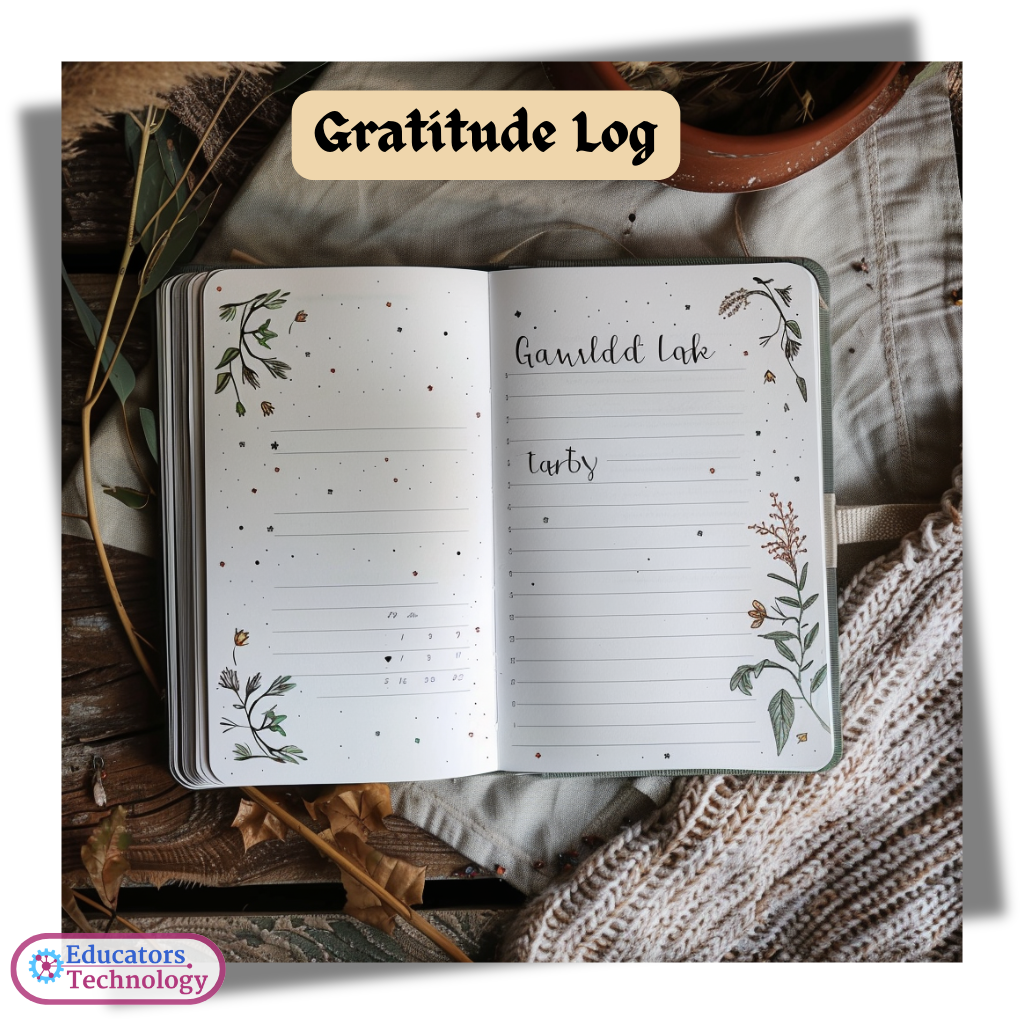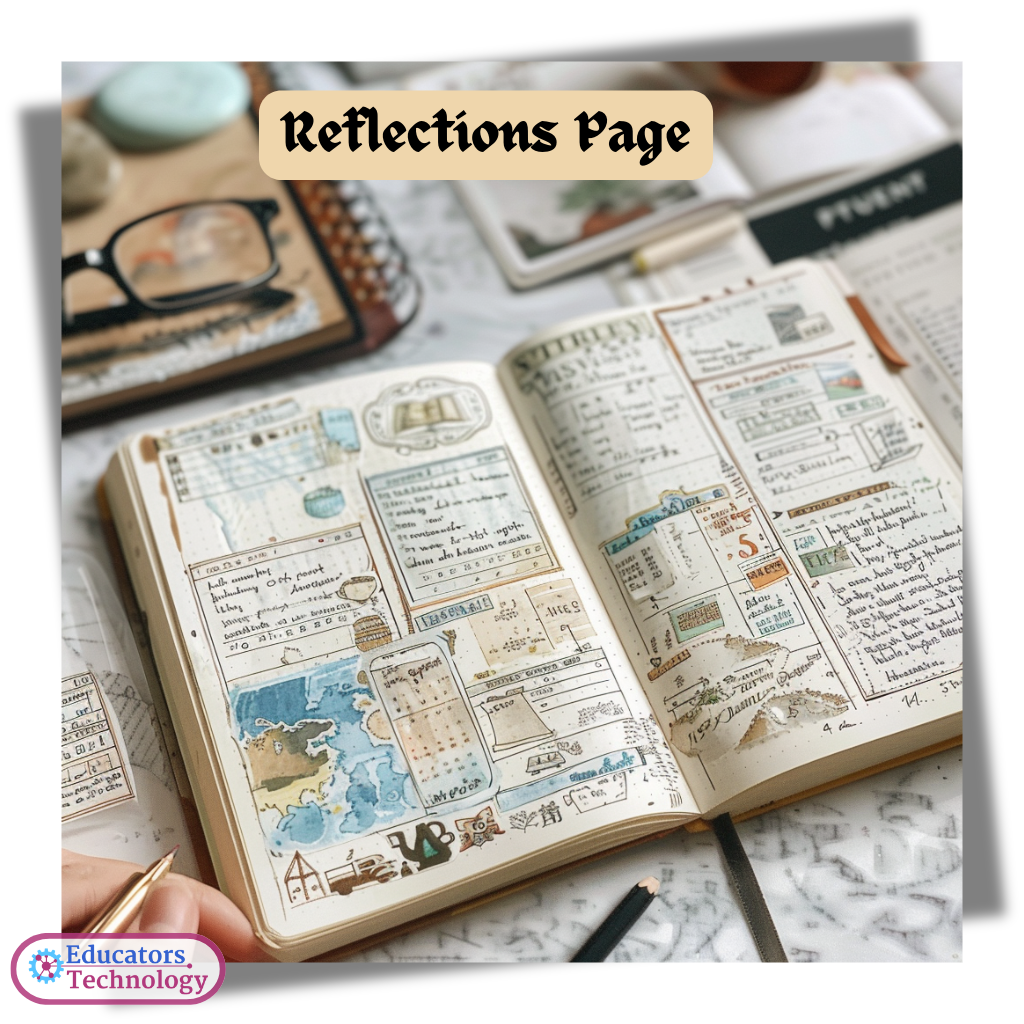In this post, I am sharing with you a collection of bullet journal ideas designed to enhance your organizational skills, boost your productivity, and foster personal growth. Bullet journaling offers a flexible, creative way to track various aspects of your life, from daily routines to long-term goals. Each section below introduces a specific bullet journal feature, explaining how it can be tailored to meet your unique needs and preferences.
While traditional pen and paper journaling has its charm, digital journaling offers enhanced flexibility and efficiency, especially for those always on the go. In my exploration of various journaling and note-taking apps, I’ve reviewed several that stand out for their functionality and user-friendliness. Notion, Apple Notes, Bear, OneNote, and Evernote are among the best tools available for digital journaling.
These apps allow you to organize your entries more dynamically, integrate multimedia elements like photos and links, and even sync your data across multiple devices. This digital approach can significantly streamline how you capture thoughts and manage information, making it easier to keep everything accessible and secure, no matter where you are.
Bullet Journal Ideas
Whether you’re looking to manage your finances, reflect on your personal journey, or keep tabs on your reading habits, these ideas will inspire you to customize your bullet journal in ways that are both practical and rewarding.
1. Daily Logs

Daily logs in a bullet journal serve as a central hub for your day-to-day activities. They typically include a list of tasks, events, and miscellaneous notes that help keep your daily life organized. This section is invaluable for managing daily to-do lists, setting reminders for appointments, and jotting down last-minute changes or ideas. The straightforward format allows for quick referencing and updating throughout the day, making it easier to stay on top of your schedule and priorities.
2. Monthly Calendar

A monthly calendar in your bullet journal provides a bird’s-eye view of the month ahead. By using a traditional calendar layout, you can easily mark and view important dates such as meetings, birthdays, anniversaries, and other significant events. This overview helps in planning out your days and weeks in advance and ensures that you’re prepared for upcoming commitments. It’s also a great space to visually see how your month is shaping up and to balance your workload and personal life.
3. Habit Tracker

Habit trackers are incredibly effective tools in a bullet journal for monitoring and building new habits. By setting up grids to track daily activities like drinking water, reading, exercising, or meditating, you create a visual accountability tool. Each day that you complete a task, you fill in a square or mark it in some way, which provides a clear picture of your consistency and areas needing improvement. Over time, this method can significantly aid in establishing and maintaining healthy routines and behaviors.
4. Mood Tracker

Mood trackers in a bullet journal use colors or symbols to represent different moods throughout each day, allowing you to visually track how you feel over time. This tool is particularly useful for identifying patterns in emotional well-being and understanding the impact of various activities or events on your mood. By reflecting on this tracker, you can make informed decisions about changes you might want to implement in your life to enhance your overall happiness and mental health.
5. Meal Planner

Meal planning in a bullet journal helps streamline your dietary habits and grocery shopping. By outlining meals for the week or month, you can ensure a balanced diet, save time during grocery shopping, and avoid the stress of last-minute meal decisions. This planner can include spaces for breakfast, lunch, dinner, and snacks, making it easy to glance at what ingredients you need to buy and what meals you can look forward to. Moreover, meal planning encourages healthier eating habits by promoting home-cooked meals over impulsive or less nutritious choices.
6. Budget Tracker

A budget tracker in your bullet journal is a fundamental tool for managing your finances effectively. It allows you to record all your expenses and savings, helping you stay within your financial limits and avoid overspending. This section can be divided into categories such as rent, groceries, entertainment, and utilities, providing a clear overview of where your money is going each month. By keeping close tabs on your spending patterns, you can make more informed decisions about your finances, set realistic savings goals, and better prepare for future expenses.
7. Reading List

Maintaining a reading list in your bullet journal not only helps keep track of the books you wish to read but also serves as a motivational tool to continue reading regularly. This section can include a checklist of titles to read, spaces to write brief summaries, and areas to jot down impactful quotes or thoughts from each book. It’s a great way to reflect on what you’ve learned and how certain reads have influenced your thinking. Plus, seeing the list grow can be incredibly satisfying and a visual reminder of your literary journey.
8. Gratitude Log

A gratitude log is a simple yet powerful addition to any bullet journal. By dedicating a space to write down things you are thankful for each day or week, you cultivate an attitude of gratitude and positive thinking. This practice can significantly impact your mental health, helping to reduce stress and increase overall happiness. Reflecting on the positives in your life regularly can shift your mindset to notice and appreciate the good, even on more challenging days.
9. Project Tracker

A project tracker in your bullet journal is crucial for managing both personal and professional projects effectively. This section allows you to outline the necessary steps, track your progress, set deadlines, and list resources or contacts related to the project. Having all this information in one place makes it easier to stay organized and ensures that you are making steady progress towards your goals. It’s particularly useful for complex projects requiring coordination of many tasks and deadlines.
10. Fitness Goals and Progress

Recording your fitness routines and tracking progress toward your fitness goals in your bullet journal can greatly enhance your physical health and mental well-being. This section might include daily or weekly logs of exercise types, durations, and intensities, along with notes on how you feel physically and mentally after each session. Tracking these details helps you adjust your routines to better suit your fitness levels and goals while providing a motivational boost as you see improvements over time.
11. Sleep Log

A sleep log in your bullet journal can be a transformative tool for enhancing your sleep quality. By recording the number of hours you sleep each night along with qualitative notes on how restful your sleep was, you gain insights into patterns and factors affecting your sleep. This can lead to a deeper understanding of the relationship between your daily activities and sleep quality, empowering you to make adjustments that could improve your overall health and well-being. Regular tracking can also highlight the effectiveness of strategies you might be trying, like reducing screen time before bed or adjusting your sleep environment.
12. Year in Pixels

The Year in Pixels is a creative and engaging way to visually summarize your year in your bullet journal. Each day is represented by a colored pixel that corresponds to your overall mood or experience for that day. This results in a colorful mosaic that provides a quick, at-a-glance view of how your year unfolded emotionally. It’s not only a fun and artistic way to journal but also a useful tool to observe emotional trends and triggers over the year, helping you identify what brings joy and what may need more attention in your life.
13. Skill Development

In your bullet journal, creating a section for skill development allows you to set goals for new skills you wish to learn and track your practice sessions and progress. This can include anything from learning a new language to mastering a musical instrument or developing a professional skill. By breaking down the skill into manageable tasks and recording practice times, you can monitor your improvement, stay motivated, and maintain accountability. It’s a practical way to ensure continuous personal or professional growth.
14. Travel Planner

A travel planner in your bullet journal is your go-to for organizing future trips. This section can include detailed information about destinations, budget planning, packing lists, and itineraries. Planning ahead in this way helps to ensure that no detail is overlooked, from transportation and accommodations to activities and meals. It also allows you to budget effectively, making sure you get the most out of your travel experiences without unexpected expenses throwing you off track.
15. Reflections Page

Dedicating a space in your bullet journal for reflections allows you to capture personal insights, significant learning moments, and general observations about life. Whether you choose to reflect monthly or annually, this practice can be deeply rewarding. It encourages introspection, helps you recognize your achievements and areas for growth, and provides a historical record of your personal development. Reflection pages can include thoughts on experiences, books read, lessons learned, and personal milestones, making them a rich resource for self-discovery and future planning.
Final thoughts
I hope you have found this collection of bullet journal ideas useful for enhancing your organizational strategies and personal growth. Whether you prefer the tactile feeling of writing in a traditional journal or the convenience and versatility of digital tools, there’s a method out there that can cater to your needs. Each approach, be it using a simple notebook or a sophisticated app, offers unique advantages that can help you stay organized, track your progress, and maintain a clearer mind. I encourage you to experiment with these ideas and tools to discover what best supports your goals and lifestyle.
The post 15 Practical Bullet Journal Ideas appeared first on Educators Technology.

